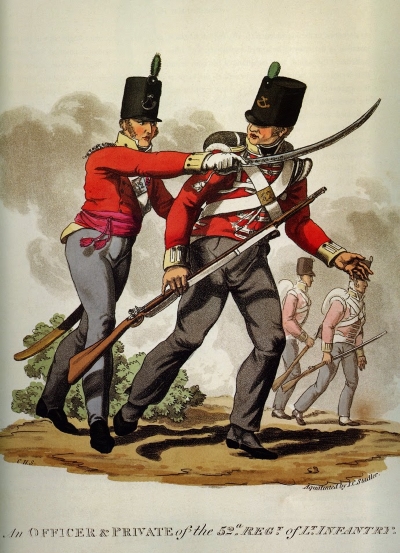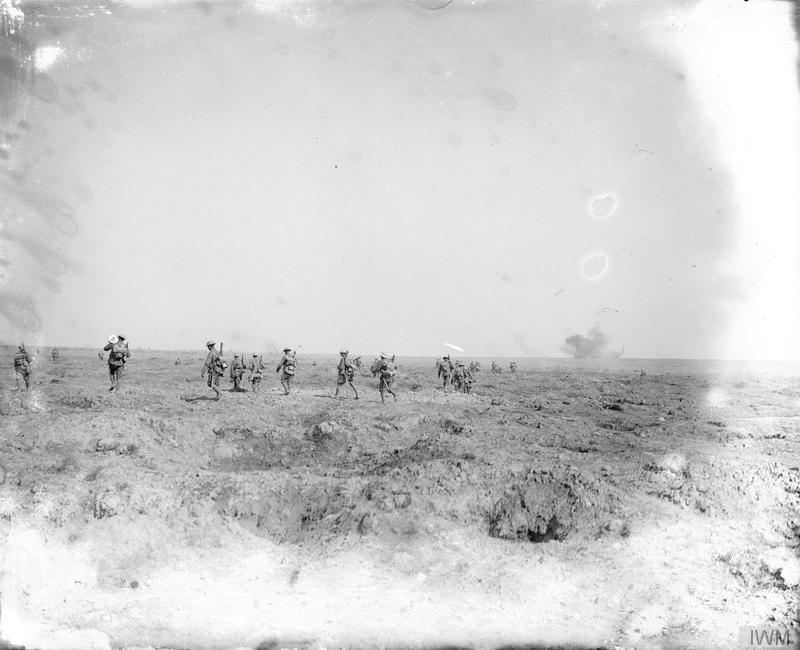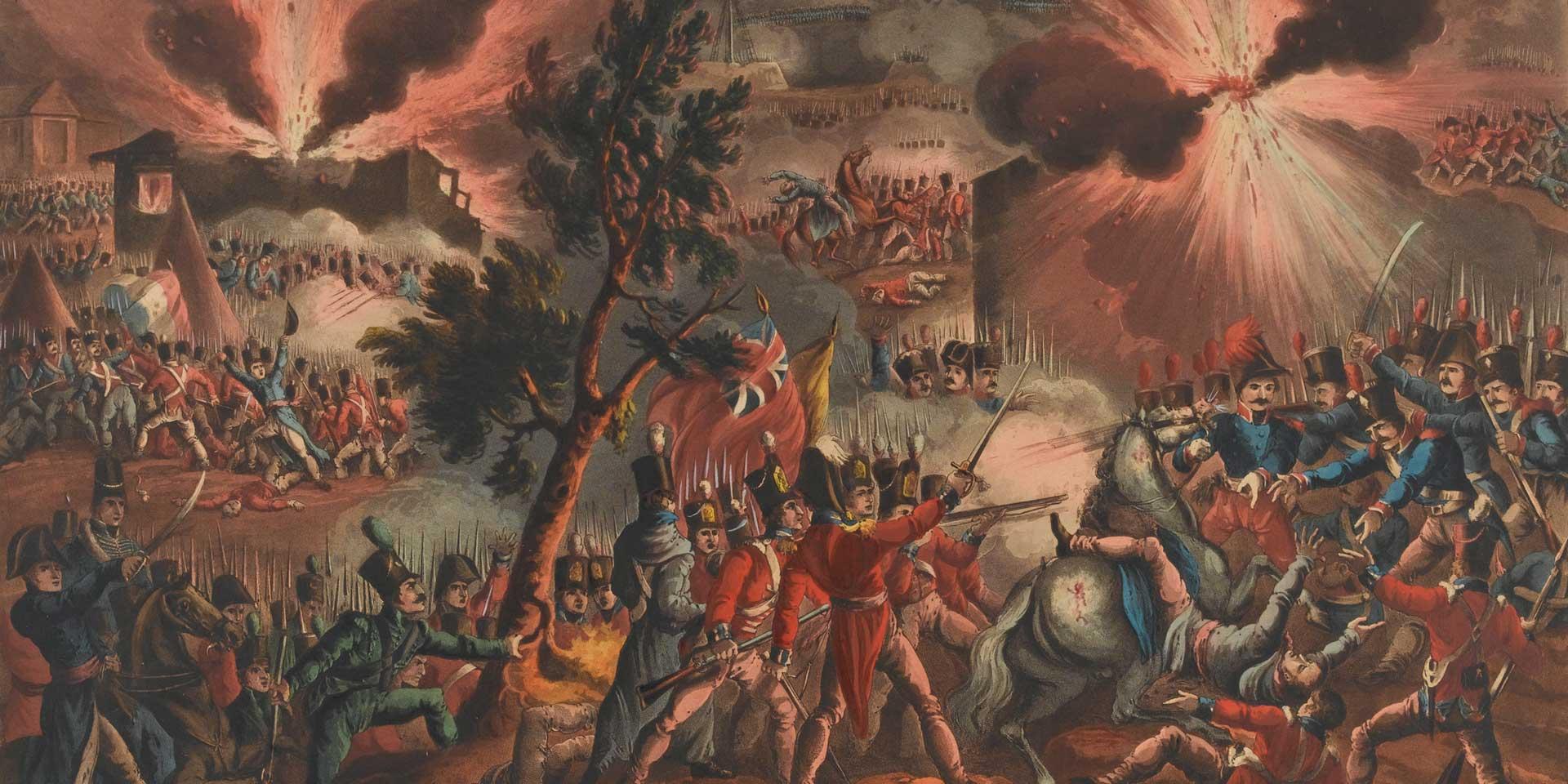|
Battle Of Nive
The Battles of the Nive (9–13 December 1813) were fought towards the end of the Peninsular War. Arthur Wellesley, Marquess of Wellington's Anglo-Portuguese and Spanish army defeated Marshal Nicolas Soult's French army on French soil in a series of battles near the city of Bayonne. Unusually, for most of the battle, Wellington remained with the Reserve delegating command to his senior Lieutenant-Generals Rowland Hill and John Hope. Background Wellington's army had successfully pushed the French army out of Spain, over the Pyrenees, and into south-west France. After his defeat at Nivelle, Marshal Soult fell back to a defensive line south of the town of Bayonne along the Adour and Nive rivers. The rivers and the Bay of Biscay near Bayonne form a rough Greek letter Pi (π). The left vertical leg is the coast, the right vertical leg is the Nive and the crossbar is the Adour. Bayonne is located where the Nive joins the Adour. Initially, Wellington's army was confined to ... [...More Info...] [...Related Items...] OR: [Wikipedia] [Google] [Baidu] |
War Of The Sixth Coalition
In the War of the Sixth Coalition (March 1813 – May 1814), sometimes known in Germany as the Wars of Liberation, a coalition of Austria, Prussia, Russia, Spain, the United Kingdom, Portugal, Sweden, and a number of German States defeated France and drove Napoleon into exile on Elba. After the disastrous French invasion of Russia of 1812 in which they had been forced to support France, Prussia and Austria joined Russia, the United Kingdom, Sweden, and Portugal, and the rebels in Spain who were already at war with France. The War of the Sixth Coalition saw major battles at Lützen, Bautzen, and Dresden. The even larger Battle of Leipzig (also known as the Battle of Nations) was the largest battle in European history before World War I. Ultimately, Napoleon's earlier setbacks in Spain, Portugal and Russia proved to be the seeds of his undoing. With their armies reorganized, the allies drove Napoleon out of Germany in 1813 and invaded France in 1814. The Allies defeated the ... [...More Info...] [...Related Items...] OR: [Wikipedia] [Google] [Baidu] |
Anglo-Portuguese Army
The Anglo-Portuguese Army was the combined United Kingdom of Great Britain and Ireland, British and Portugal, Portuguese army that participated in the Peninsular War, under the command of Arthur Wellesley, 1st Duke of Wellington, Arthur Wellesley. The Army is also referred to as the British-Portuguese Army and, in Portuguese language, Portuguese, as the ''Exército Anglo-Luso'' or the ''Exército Anglo-Português''. The Anglo-Portuguese Army was established with the British Army deployed to the Iberian Peninsula under the command of General Arthur Wellesley, and the Portuguese Army rebuilt under the leadership of British General William Beresford, 1st Viscount Beresford, William Beresford and the Portuguese minister of defense, War Secretary Miguel Pereira Forjaz. The new Portuguese battalions were supplied with British equipment, trained to British standards and thoroughly re-organised. Incompetent or corrupt officers were Cashiering, cashiered and appropriate replacements were ... [...More Info...] [...Related Items...] OR: [Wikipedia] [Google] [Baidu] |
Light Division
The Light Division was a light infantry division of the British Army. Its origins lay in "Light Companies" formed during the late 18th century, to move at speed over inhospitable terrain and protect a main force with skirmishing tactics. These units took advantage of then-new technology in the form of rifles, which allowed it to emphasise marksmanship, and were aimed primarily at disrupting and harassing enemy forces, in skirmishes before the main forces clashed. Formed in 1803, during the Napoleonic Wars, the Light Division was raised thrice thereafter: during the Crimean War, the First World War and from 1968 to 2007. Some light infantry units remained outside the Light Division. Origins of the Light Division The British Army's first three "Rifle Battalion" was raised by the 60th (Royal Americans) in 1797–99. The command of this first rifle battalion was given to Francis de Rottenburg, who had extensive experience with light infantry. While the 60th did not officially be ... [...More Info...] [...Related Items...] OR: [Wikipedia] [Google] [Baidu] |
5th Infantry Division (United Kingdom)
The 5th Infantry Division was a regular army infantry division of the British Army. It was established by Arthur Wellesley, 1st Duke of Wellington for service in the Peninsular War, as part of the Anglo-Portuguese Army, and was active for most of the period since, including the First World War and the Second World War and was disbanded soon after. The division was reformed in 1995 as an administrative division covering Wales and the English regions of West Midlands, East Midlands and East. Its headquarters were in Shrewsbury. It was disbanded on 1 April 2012. Peninsular War The 5th Division during the Peninsular War under the command of General James Leith was present at most of the major engagements including the Battle of Bussaco, the Battle of Sabugal, the Siege of Almeida, the Battle of Badajoz, the Battle of Salamanca, the Battle of Vitoria, the Siege of San Sebastian, the Battle of Nivelle and the Battle of the Nive. Peninsular War order of battle The order of battl ... [...More Info...] [...Related Items...] OR: [Wikipedia] [Google] [Baidu] |
History Of The British 1st Division Between 1809–1909
The 1st Division was an infantry division of the British Army that was formed and disestablished numerous times between 1809 and the present. It was raised by Lieutenant-General Arthur Wellesley for service in the Peninsular War (part of the Coalition Wars of the Napoleonic Wars). It was disestablished in 1814 but re-formed the following year for service in the War of the Seventh Coalition. It then fought at the Battle of Waterloo, where it repulsed numerous attacks including the final attack of the day that was launched by the French Imperial Guard. Following the battle, it then marched into France and became part of the Army of Occupation before being disbanded a few years later. During the mid- to late-19th century, several formations bearing the name 1st Division were formed. Per the division's official website, three such formations form part of its lineage. The first, formed in 1854 in Ottoman Bulgaria, took part in the Siege of Sevastopol, as part of the Crimean War, in ... [...More Info...] [...Related Items...] OR: [Wikipedia] [Google] [Baidu] |
Ustaritz
Ustaritz (; eu, Uztaritze) is a town in the traditional Basque province of Labourd, now a commune in the Pyrénées-Atlantiques department, southwestern France. It is located on the river Nive some inland from Bayonne. Ustaritz station has rail connections to Saint-Jean-Pied-de-Port, Cambo-les-Bains and Bayonne. Ustaritz was the location of the assembly of local Basque leaders before the French Revolution. The 19th-century French playwright and historian Jean-Joseph Ader (1796–1859) was born in Ustaritz. Population See also *Communes of the Pyrénées-Atlantiques department References External links UZTARITZE in the Bernardo Estornés Lasa - Auñamendi Encyclopedia (Euskomedia Fundazioa)Information available in Spanish Spanish might refer to: * Items from or related to Spain: **Spaniards are a nation and ethnic group indigenous to Spain **Spanish language, spoken in Spain and many Latin American countries **Spanish cuisine Other places * Spanish, Ontario, Cana ... ... [...More Info...] [...Related Items...] OR: [Wikipedia] [Google] [Baidu] |
2nd Infantry Division (United Kingdom)
The 2nd Infantry Division was an infantry division of the British Army that was formed and disestablished numerous times between 1809 and 2012. It was raised by Lieutenant-General Arthur Wellesley for service in the Peninsular War (part of the Coalition Wars of the Napoleonic Wars) as the 2nd Division. It was disestablished in 1814, but re-formed the following year for service in the War of the Seventh Coalition. The formation fought at the Battle of Waterloo and played an important role in defeating the final French attack of the day. It then marched into France and became part of the Army of Occupation, and was the only British force allowed to march through Paris. In December 1818, the division was disbanded once again. During the mid- to late-19th century, several formations bearing the name 2nd Division were formed. Only two such were considered part of the division's lineage by Everard Wyrall, who compiled its First World War history. The first was created in 1854 to ... [...More Info...] [...Related Items...] OR: [Wikipedia] [Google] [Baidu] |
Battle Of The Nive
The Battles of the Nive (9–13 December 1813) were fought towards the end of the Peninsular War. Arthur Wellesley, Marquess of Wellington's Anglo-Portuguese and Spanish army defeated Marshal Nicolas Soult's French army on French soil in a series of battles near the city of Bayonne. Unusually, for most of the battle, Wellington remained with the Reserve delegating command to his senior Lieutenant-Generals Rowland Hill and John Hope. Background Wellington's army had successfully pushed the French army out of Spain, over the Pyrenees, and into south-west France. After his defeat at Nivelle, Marshal Soult fell back to a defensive line south of the town of Bayonne along the Adour and Nive rivers. The rivers and the Bay of Biscay near Bayonne form a rough Greek letter Pi (π). The left vertical leg is the coast, the right vertical leg is the Nive and the crossbar is the Adour. Bayonne is located where the Nive joins the Adour. Initially, Wellington's army was confined to ... [...More Info...] [...Related Items...] OR: [Wikipedia] [Google] [Baidu] |
Defeat In Detail
Defeat in detail, or divide and conquer, is a military tactic of bringing a large portion of one's own force to bear on small enemy units in sequence, rather than engaging the bulk of the enemy force all at once. This exposes one's own units to many small risks but allows for the eventual destruction of an entire enemy force. Use In military strategy and tactics, a recurring theme is that units are strengthened by proximity to supporting units. Nearby units can fire on an attacker's flank, lend indirect fire support such as artillery or maneuver to counterattack. ''Defeat in detail'' is the tactic of exploiting failures of an enemy force to co-ordinate and support the various smaller units that make up the force. An overwhelming attack on one defending subunit minimizes casualties on the attacking side and can be repeated a number of times against the defending subunits until all are eliminated. An attacker can successfully conduct the tactic of defeat in detail by exploiting the ... [...More Info...] [...Related Items...] OR: [Wikipedia] [Google] [Baidu] |
Nive
The Nive (; eu, Errobi; oc, Niva) is a French river that flows through the French Basque Country. It is a left tributary of the river Adour. It is long. The river's source in the Pyrenees in Lower Navarre. The river Nive was made famous by the ''Le petit Nicolas'' series. Geography The Nive proper is formed from three head rivers in Saint-Jean-Pied-de-Port: * The Nive de Béhérobie (main stream) * The Laurhibar * The Nive d'Arnéguy. The Nive passes through the towns of Estérençuby (Nive de Béhérobie), Saint-Jean-Pied-de-Port, Bidarray, Cambo-les-Bains, Ustaritz, Villefranque and Bayonne, where it flows into the Adour. Principal tributaries * Ezterrengibel or Esterenguibel * Nive des Aldudes, from Saint-Étienne-de-Baïgorry * Laka, from Ossès * Baztan, from Bidarray * Latsa, from Espelette See also * Battle of the Nive The Battles of the Nive (9–13 December 1813) were fought towards the end of the Peninsular War. Arthur Wellesley, Marquess of W ... [...More Info...] [...Related Items...] OR: [Wikipedia] [Google] [Baidu] |
Adour
The Adour (; eu, Aturri; oc, Ador) is a river in southwestern France. It rises in High-Bigorre (Pyrenees), in the commune of Aspin-Aure, and flows into the Atlantic Ocean (Bay of Biscay) near Bayonne. It is long, of which the uppermost ca. is known as the ''Adour de Payolle''. At its final stretch, i.e. on its way through Bayonne and a short extent upstream, the river draws the border between the Northern Basque Country and Landes regions. Places along the river ''Départements'' and towns along the river include: * Hautes-Pyrénées: Bagnères-de-Bigorre, Tarbes, Maubourguet * Gers: Riscle * Landes: Aire-sur-l'Adour, Dax, Tarnos * Pyrénées-Atlantiques: Bayonne Tributaries The main tributaries of the Adour are, from source to mouth: * Adour de Gripp (also ''Adour du Tourmalet'', 15 km) * Adour de Lesponne (19 km) * Échez (64 km) * Arros (130 km) * Léez (56 km) * Gabas (117 km) * Midouze (151 km) * Louts (86 km) * L ... [...More Info...] [...Related Items...] OR: [Wikipedia] [Google] [Baidu] |
John Hope, 4th Earl Of Hopetoun
General John Hope, 4th Earl of Hopetoun, (17 August 1765 – 27 August 1823), known as The Honourable John Hope from 1781 to 1814 and as Lord Niddry from 1814 to 1816, was a Scottish politician and British Army officer. Military career Hopetoun was the only son of John Hope, 2nd Earl of Hopetoun, by his second wife Jane or Jean Oliphant. His mother died when he was only one year old. He was commissioned into the 10th Light Dragoons in 1784. He sat as Member of Parliament for Linlithgowshire from 1790 to 1800. He took part in the capture of the French West Indies and Spanish West Indies in 1796 and 1797. In 1799 he was sent to Den Helder as Deputy Adjutant-General and was present at the Battle of Bergen and the Battle of Castricum. In 1801 he was sent to Cairo and then to Alexandria to take the surrender of the French garrisons there. He became Lieutenant-Governor of Portsmouth and General Officer Commanding South-West District in June 1805. He commanded a division during t ... [...More Info...] [...Related Items...] OR: [Wikipedia] [Google] [Baidu] |





